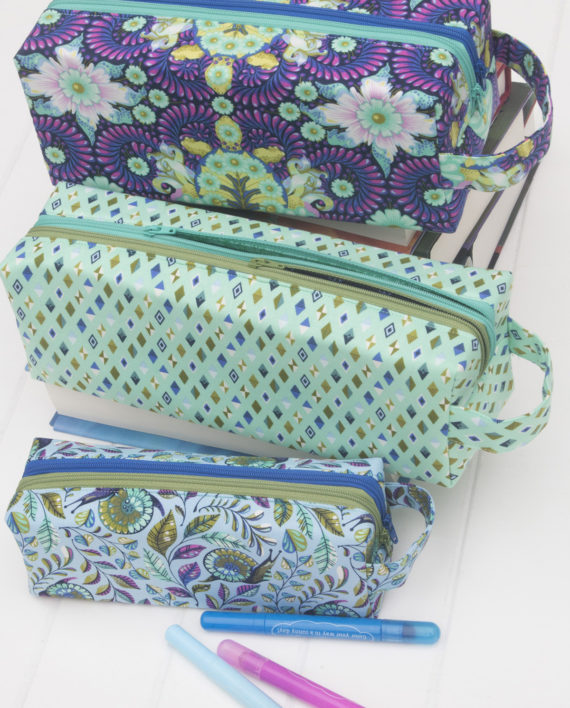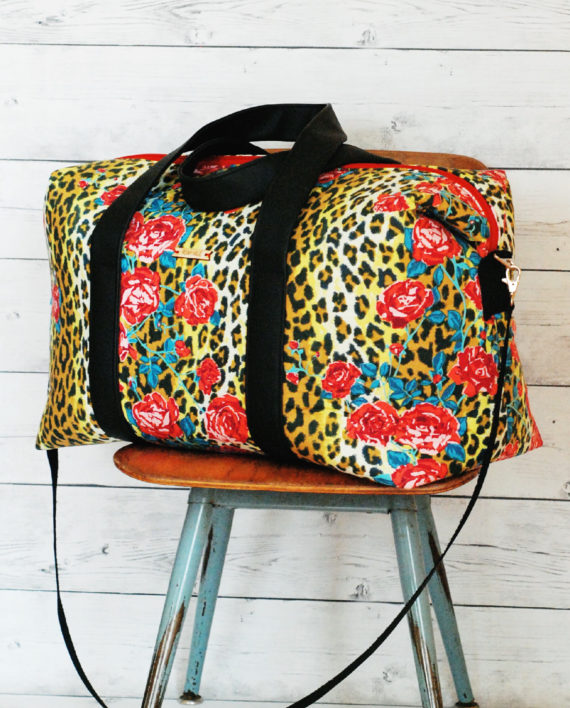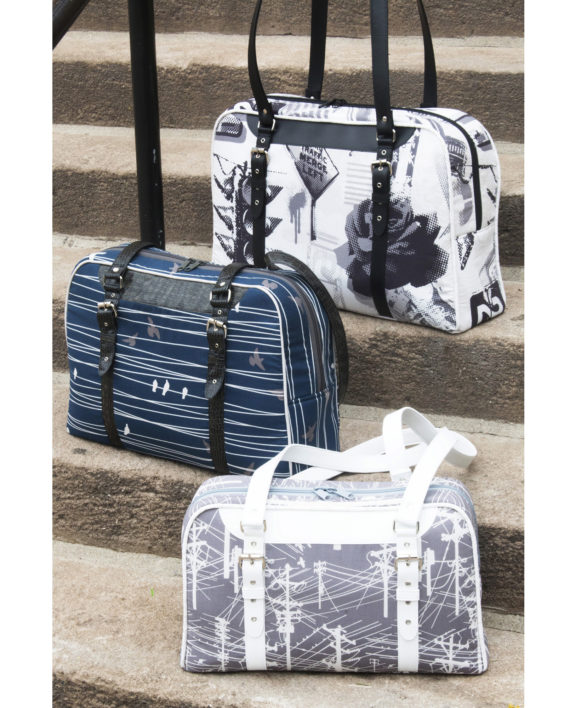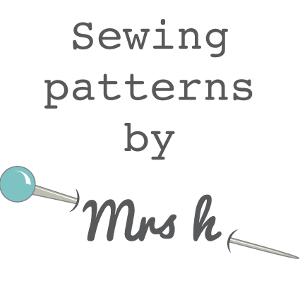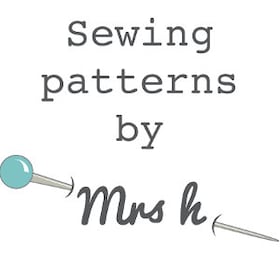Thanks for having me today, Cyndi! Bree here from My Crafty Crap, I’m so excited to be sharing for such a wonderful series. I’m going to share some of my favorite tips & tricks that help me get great results, some tools that have changed my life, and a few of my favorite zipper tutorials.
The first thing you need to remember about working with zippers, is that you absolutely can do it! Yes, they can be intimidating, there are so many tutorials and types of zippers out there, it can be hard to know where to start. But don’t be afraid! The most important things are to be patient, take your time, and practice!
So let’s talk zippers! There are so many different kinds and sizes of zippers to choose from, it can be a bit overwhelming. Here’s a great description of the different types of zippers and other general info from Sew Mama Sew: A Guide to Zippers.
Some people prefer the look and feel of metal zippers, but personally I prefer nylon since they can be easily shortened (but don’t use your good scissors! Ask me how I know…) and sewn over (just take it slow!). I like to keep a few on hand at all times (those of you who know me might know that “a few” actually means 100+…I just love having the perfect choice on hand & not stalling a project to wait for hardware!) in a variety of styles, length, and colors. Personally I mostly buy 18” and 24”, since a lot of bags need long zips and I always save the pieces I cut off if they are more than a few inches long. You can buy new sliders & pop them on the piece you cut off and get two zips for the price of one. Dog Under My Desk has a great video for reattaching a slider to the zipper tape if you are making a second zipper, or just accidentally pull off the one you’re using. I wish I had found this video a long time ago, I threw away so many zips I thought I had ruined by cutting off the excess before moving the slider (but it so much easier to cut when it’s zipped closed…lol…) or accidentally zipped it right off the edge before sewing a new stop.
A note about buying new sliders & attaching them to your cut off pieces – you have to be careful to make sure you are getting the same size/style/brand of slider that is made for the zip tape. YKK sliders won’t work on Coats & Clark zippers & vice versa. I get pretty much all my zippers from Zipit Zippers on Etsy (I’m not getting paid to say that, I just really love their selection!) and she has recently started carrying sliders (zipper heads) for both #3 all purpose zips as well as the #5 handbag zippers. I’ve found it’s also fun to mix & match colors this way like I did on these sunglasses cases.
My favorite, and maybe a little unconventional, tools when it comes to working with zippers are Dritz Wonder Tape and the Clover Fabric Folding Pen (both available on Amazon as well as craft stores & some Walmarts). Seriously, sometimes I’m not sure how I sewed before I got these two.
I now use the Wonder Tape in place of pin basting for so many things, but especially when holding zippers in place before sewing them in. Even with lots of pins, zippers & fabric (especially if it isn’t interfaced) will still shift and stretch ever so slightly. It may not seem like much, but even a little bit can cause problems down the road and leave you with a wavy zipper. Nobody likes wavy zippers!
I probably had the Clover Fabric Folding Pen in my Amazon cart for a year before I finally ordered it, but I wish I had gotten it so much earlier! I can’t remember where I first saw it, but while it’s geared more towards quilters, I quickly realized it’s indispensible to my bag making. I use it for folding over small edges on labels or zip ends, which keeps me from constantly burning my fingers. It’s great for folding in your seam allowance on the opening left for turning out a bag (I usually run it along the stitching line, then user Wonder Clips to hold it in place until the solution dries, or hit it with an iron to set it quickly. If you turn your bag while it’s still wet, it can cause the fabric to stretch along the line & not fit as nicely), or folding down a seam allowance if you are inserting a lining by just dropping it in to the exterior.
By far though, my favorite use is to get a perfect (or as close to perfect as you can get) opening for a inset zipper pocket. How many times have you cut & pressed that opening, but still had scrunchy corners (technical terms here!) or too much of the facing showing or it pulls down the top edge? I have found that by using the Fabric Folding pen along the stitch line after sewing around the box (on both sides), I am able to get the window to turn out much nicer & more flat, with hardly any of the facing piece showing. Just finger press to get the facing turned out so it’s showing as little as possible from the right side, then press with a hot iron to set.
Here I have traced over the pink pen line with the Fabric Folding Pen
The right side of the bag panel after pressing the facing to the wrong side. No puckers or pulling edges!
And here is the facing on the wrong side of the bag panel. You can see there is a tiny bit of pulling in the corners of the facing, but they won’t be visible.
Personally, I prefer to have the edges my zipper tape hidden on inset zipper pockets. I think they look nicer and more professional. This is a pretty good tutorial from Ikatbag for making an inset zipper pocket (sometimes called a welt pocket). I’ll be honest, it took me a long time to figure out the easiest way to do this without causing a lot of extra work, still be held securely at the top of the pocket (I hate it when the weight of what’s in the pocket pulls down on the top), and have a continuous line of stitching around the outside of the zipper opening. I have found that by sewing the pocket pieces to the zipper prior to stitching it in really adds no extra time, but makes for a much nicer finish, and it’s easier to stitching them on first rather than trying to do it once the zipper is attached to the bag. Simply sew your pieces on to each edge of the wrong side of the zipper tape, so that the fabric pieces are right side together.
Right side of the zipper, wrong side of the pocket fabric.
Wrong side of the zipper, right side of the pocket fabric.
The easiest way to remember how/where they need to go is to just imagine the pocket you are trying to create. The right side of the zipper will be against the wrong side of the bag lining and you want the right side of your pocket fabric showing when you reach into the zipper pocket. After sewing the pocket pieces to the zipper, use a couple pieces of wonder tape or glue baste your zipper under the opening, make sure the pocket pieces are pulled out of the way, then stitch all the way around the opening, making sure to move the zipper pull when you get to it so you can have a nice, even line of stitches. Then just sew up the sides and bottom of your pocket (I always round off the bottom corners to keep things from getting stuck down there).
I wrote this tutorial a few years ago to show how I insert a zipper for the top of a pouch, and honestly, even though I’ve learned a lot of new techniques in the past 5 years, that method is still pretty much my go-to choice when it comes to sewing zipper pouches. The results will give you a great finish with no dented corners. My biggest pet peeve when it comes to zip pouches is dented corners.
Dented corners – the very bane of my existence… This is one of my very early zipper pouches, but thankfully I learned how to avoid this, and I promise you can too!
See…nice, crisp corners with no dents. So much better!
The only things I have changed from my tutorial above is to use Wonder Tape in place of pins & basting and I only topstitch the lining. The biggest secret to avoiding dented corners is simply to keep your zipper out of the side seams. Use zip ends or fold your zipper over at the start & keep them at least 1/8” inside your seam allowance. The space between the zip end won’t be big enough for anything to fall out, but it will give your pouch the room it needs to have nice straight corners.
When I use Wonder Tape to baste my zipper to the lining and exterior pieces, I just put one piece on the top edge of the right side of the lining, place the zipper wrong side down centered & matching up the edges, put another pieces of Wonder Tape along the zipper tape, then place the exterior on right side down. If you are questioning whether you have everything layered in the correct order (it’s sometimes hard to remember if the lining or exterior should be against the right side of the zipper {hint – it’s the exterior!}), just fold both pieces back away from the zipper & see how it will end up. As long as you are careful with it, the tape will hold your sandwich while you double check your placement. I still have to do this from time to time when I start over-thinking the process or haven’t done it in a while. Then simply stitch along the edge (making sure to stop & move the zip pull!) with about a ¼” seam allowance.
Here the pink is my exterior (right side up), zipper is already held in place right side together with the exterior using Wonder Tape, and my lining is ready to go on right side down. The white strip is the Wonder Tape before removing the backing.
The other change I have made, which I already mentioned, is to only topstitch the lining to the zipper. Personally, I find this step extremely important to keep the lining from getting caught in the zipper. Some people have luck with just pressing away from the zipper, but I’d rather take the extra step to keep from getting a stuck zipper. Instead of folding both the lining & exterior away from the zipper, wrong sides together and stitching through both (as shown in my tutorial above), pull the exterior up and out of the way, then from the lining side, topstitch about 1/8” away from the edge, stitching the lining to the zipper tape. This will keep your lining from getting stuck in the zipper, but allows the exterior to still lay flat and away from the lining during the step when you sew up the pouch. This means you have less bulk in the corners and they will push out nicely. If you prefer the look of topstitching on the exterior, you can stop/start your topstitching at the same point where your zipper ends (remember, keep it out of your seam allowance!), then fold only the seam allowances to the lining side when sewing up the sides.
This is the lining of the same pouch above. You can see there is topstitching to help keep the lining from getting caught in the zipper.
And the exterior, with no topstitching.
Then just sew up the sides, matching up the exterior pieces rights sides together and lining pieces right sides together & sew around the outside (please remember to open your zipper first!!!).
Different pouch, but same method. Top is the lining side, you can see that by only topstitching the lining to the zipper, the exterior and interior are both able to lay nice & smooth at the zipper (where the double line of dark stitching it), so there will be no bunching.
The above pouch completed and turned out. No topstitching on the exterior, and even though that top band is glitter vinyl (and therefore less forgiving than cotton), I was still able to achieve nice corners.
Another great resource from Dog Under My Desk is this tutorial on sewing a perfect zipper tab. Personally, I know it’s sometimes hard to get a bag wrangled in a decent position without leaving a super long zipper tail, so I prefer these zip ends from Emmaline Bags these days. You can never go wrong with a little extra bag bling!
Honestly, I could probably go on and on, but I think I’ve rambled enough. If you have any questions about anything I’ve shared, please don’t hesitate to ask. I am always happy to help whenever I am able, or point you in the direction of someone who may be able to help if I can’t. You can find more of my ramblings (though, thankfully, not as lengthy…lol…) over on Instagram. Just shout if you need help! :)





